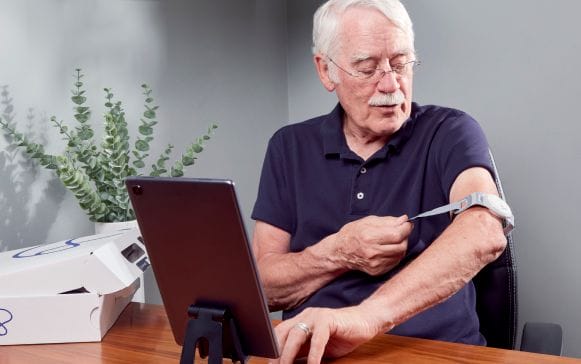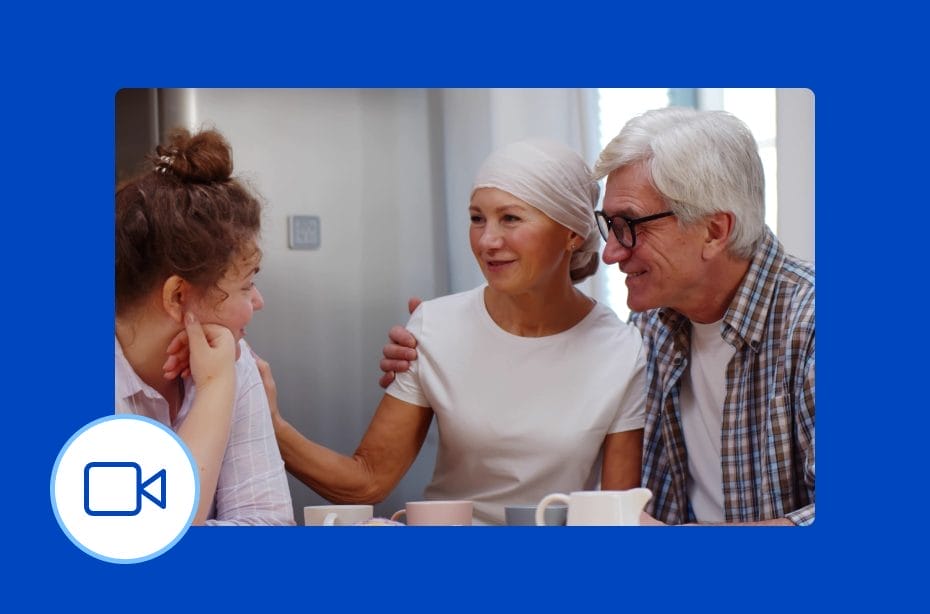Reducing Inpatient Stays by Moving Pre and Postoperative Orthopaedic Care to the Home
This case study was originally published in NHS England’s musculoskeletal digital playbook.
Medway’s SMART service overview
Medway NHS Foundation Trust’s Surgical Medical Acute Response Team (known as SMART) are a dedicated team of nurses, consultants and therapists who lead the trust’s virtual ward program. This program allows acute patients normally hospitalised to be discharged and receive care within their own homes as a continuation of the hospital’s acute admission pathway. The multidisciplinary team’s goals are to increase patient flow and efficiency of discharge across the hospital.
Situation: pre and postoperative care consumes up to 9 bed days
Patients who present at Medway’s accident and emergency department with lower limb fractures are admitted as an inpatient until the swelling reduces and a trauma theatre slot is available. Patients are managed as an inpatient for up to 8 days before surgery. After surgery, patients typically remain in hospital for another 2 days.
Aspiration: safely transfer pre and postoperative care to the home
The trust’s virtual ward team wanted to safely monitor and manage orthopaedic patients at home before and after their surgery. This would keep hospital beds free for other patients needing acute hospital care.
Solution: manage patients via remote monitoring, telehealth and home-visits
In partnership with the trust’s trauma team, the SMART service introduced a virtual care pathway for patients who present to the accident and emergency department with lower limb fractures. Once a patient’s condition is stable, they can be discharged and remotely monitored by SMART using Current Health’s care-at-home platform until a theatre slot for surgical repair is confirmed.
Incorporating Current Health’s technology into the new pathway, preoperative care can be delivered safely and effectively as it enables SMART to:
- Monitor vital signs continuously with hospital-level accuracy
- Manage lower limb edema via video consultations
- Monitor for thrombotic complications or skin breakdown
- Educate and support the patient about remote monitoring and self-care
- Supervise the preoperative planning process
How the virtual care pathway works in practice
Day one
The first stage of this pathway starts in the accident and emergency department where the fracture is stabilised, the patient is given analgesia, heparin is prescribed to prevent deep vein thrombosis (DVT) and the case is referred to the surgical repair waiting list. Following this, the patient is referred to the SMART service where a nurse can initiate remote care using the Current Health platform based on an initial assessment.
Days two to five
Virtual visits with the patient are conducted by the SMART nurse on a daily basis, using the telehealth technology built into Current Health’s platform. Patients’ continuous vital sign data, captured by Current Health’s sensors, are also reviewed to evaluate patients for signs of thrombotic complications or infection.
Swelling is expected to subside within 5-7 days post-injury at which point, the SMART and trauma teams can finalise a time to undertake surgery.
Day six
One day prior to surgery, a home visit by a SMART nurse is arranged to complete preoperative blood tests and a final evaluation of the fracture in preparation for admission.
Days seven and eight
Following surgery, the aim is to discharge patients home on the same day and continue remote patient monitoring postoperatively for a further 24 hours.
The impact of virtual care: 90% decrease in bed days and high patient satisfaction ratings
With the implementation of the remote care pathway, only 1 day of inpatient care is needed in comparison to 10 days (8 days for preoperative management and 2 days for postoperative care). This saves the hospital a total of 9 bed days, allowing for beds to be utilised by patients requiring acute hospital care.
Patients who have followed the trauma pathway to date have rated the overall experience very highly as it has enabled them to prepare for and recover from surgery in the comfort of their own homes.
“[There is a] better patient experience when care is given by acute specialist nurses in [the] patient’s own home.
With experience, patients control their pain and general symptoms better when they are participating in their care.”
Jackie Hammond, Clinical Nurse Lead, SMART, Medway NHS Foundation Trust
Further resources
On-demand webinar: How to build virtual wards that patients and clinicians love
Guide: 4 ways virtual wards are benefitting nurses
Medway case study: meeting the demand for virtual wards services


